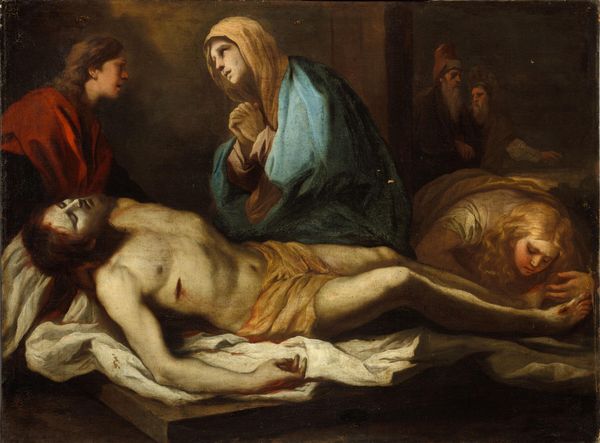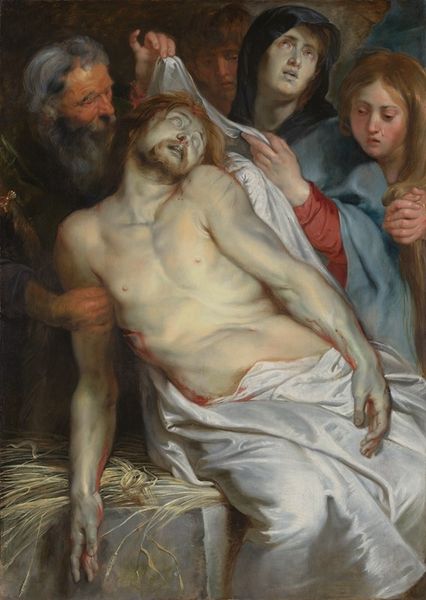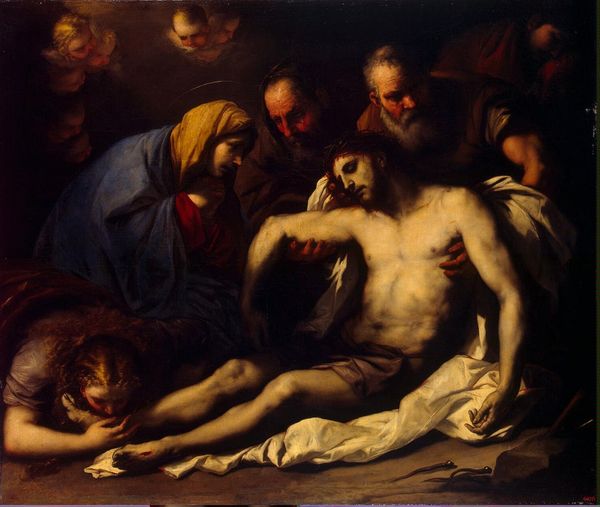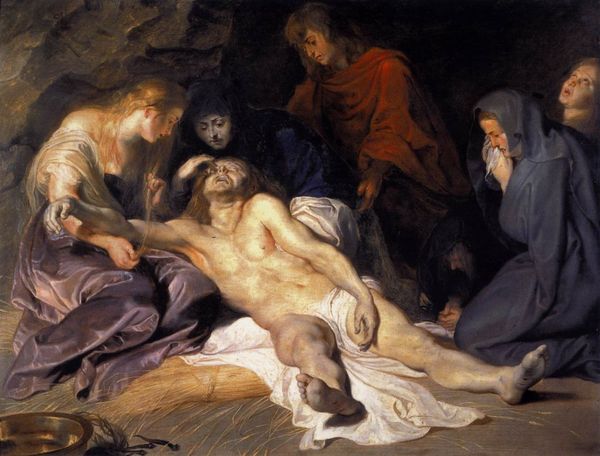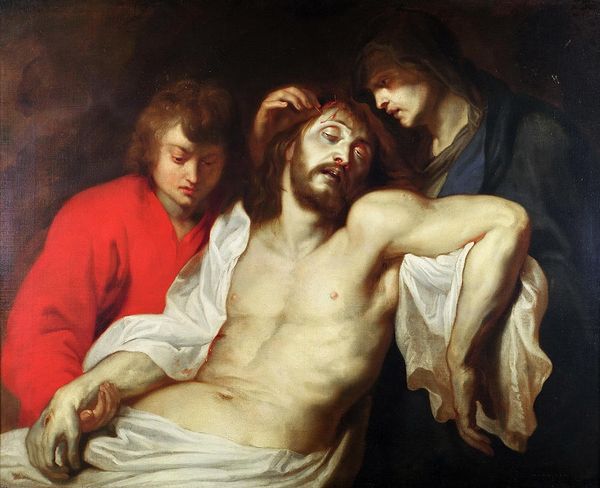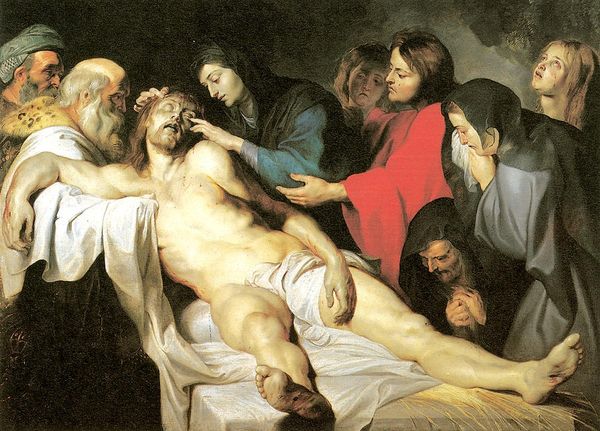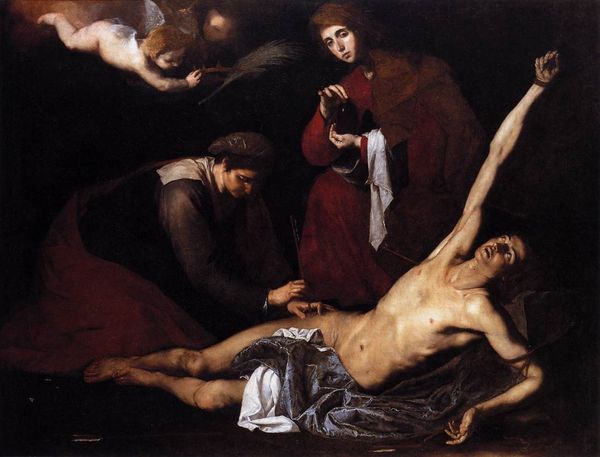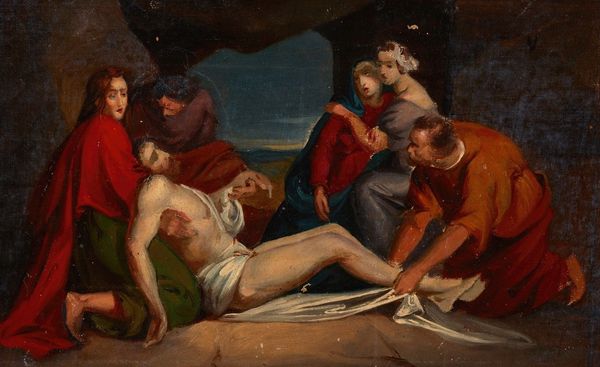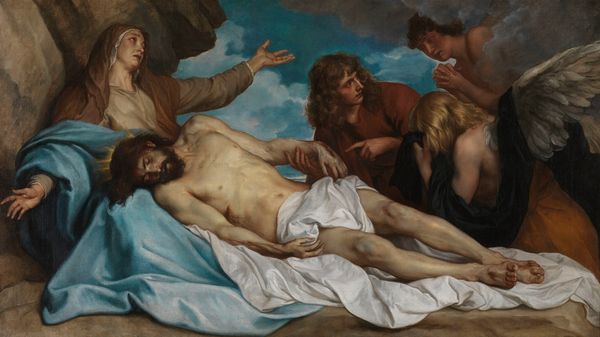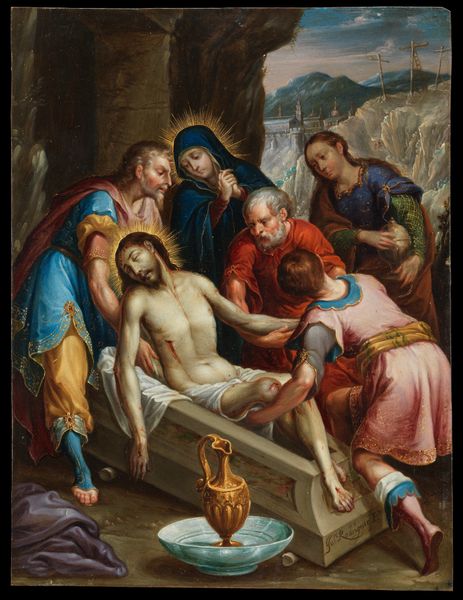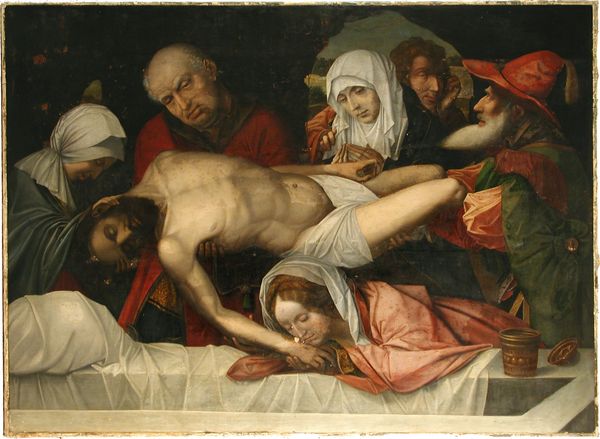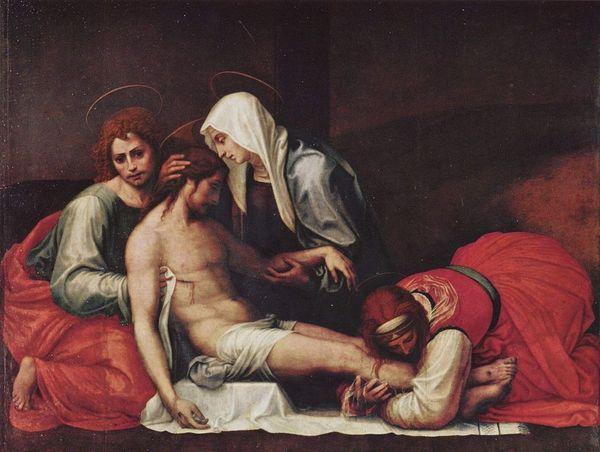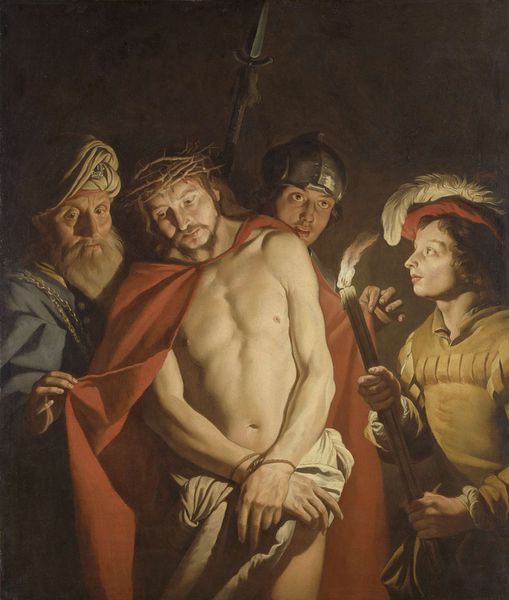
oil-paint
#
allegory
#
narrative-art
#
baroque
#
oil-paint
#
figuration
#
oil painting
#
chiaroscuro
#
history-painting
Copyright: Public Domain: Artvee
Editor: We're looking at "The Entombment," an oil painting from 1612 by Peter Paul Rubens. The first thing that strikes me is how the stark light emphasizes the lifeless body against the dark background. What formal qualities stand out to you? Curator: Indeed. Note how Rubens employs dramatic chiaroscuro. The stark contrast isn't merely representational but structural. It sculpts the figures, emphasizing volume and musculature in Christ's body, for example. Observe, also, how the composition hinges on a dynamic diagonal, drawing our eye from the lower right up towards the anguished face looking up. Editor: So, the positioning of the body and the light aren't just about showing grief, they're integral to how the painting is built? Curator: Precisely. Rubens manipulates formal elements – color, light, line – to create a pyramidal structure, giving the scene both stability and dynamism. Note how the red of the robe on the left creates a visual anchor. The whiteness of the shroud amplifies the horror but also leads our gaze to that expressive upward glance. How would you consider the relation between the color and narrative in the work? Editor: I guess the whiteness could emphasize innocence or purity in contrast to the violence represented in the wounds. I hadn't really thought about color that way. It makes me want to analyze the individual shapes more. Curator: Reflecting on these formal decisions—the geometry, light, and pigment—reveals the artist’s strategy to engage the viewer through calculated aesthetic impact. Editor: I’ll definitely pay more attention to how these elements interact rather than just looking at what the painting depicts from now on!
Comments
No comments
Be the first to comment and join the conversation on the ultimate creative platform.
